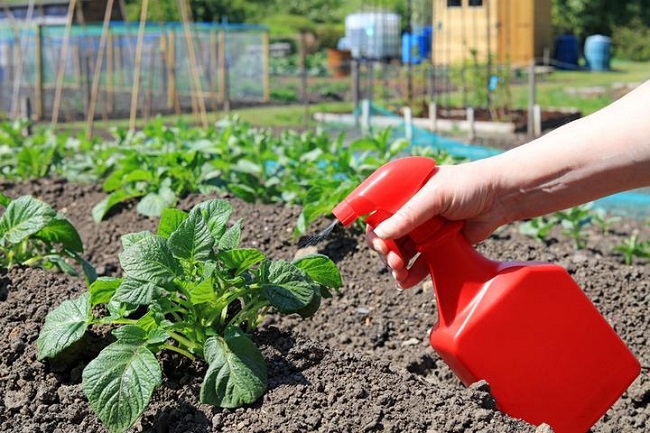
This relatively new approach to plant disease control is really a ‘rediscovered’ approach known as biofungicide. This is a method of attacking plant infection by using naturally occurring and unmodified bacteria and fungi.
Biofungicide or natural fungicides use unmodified, naturally occurring bacteria and fungi to control plant disease and fungal infections. They have been used since the 1930’s to control powdery mildew, root rot, rust, and other fungal diseases. What makes this a an exciting way to tackle plant infection is that new varieties of bacteria and fungi are being discovered each day that can be used in this way.
It works because they can directly attack plant disease or slow down infectious growth. Or they may simply be harmless bacteria that multiply so quickly they take all possible room and resource leaving no room for infectious disease to grow. They may eat the same food as disease organisms helping to starve out the disease or they may produce natural antibiotics that kill bad organisms. Lastly, some natural fungicides make a sugar compound that interferes with the disease organism’s metabolism thus killing it. The possibilities are virtually endless.
Currently there are over 40 brands of these natural fungicides being marketed worldwide. Advantages from their use as disease control include a reduction in use of toxic chemicals and forcing diseases to develop chemical resistant varieties. These natural organisms are safer to use than a toxic chemical and they are more stable than chemicals when it comes to storage. And they are not toxic to a host plant even if they are reapplied several times.
But there are disadvantages as well. For instance, they have a narrower target range of disease per biofungicide organism and require greater preparation for use than chemicals. They do not work quickly and many times a plant infection needs to be eradicated fast before it can kill the host plant. Even though it has better storage stability than chemicals, the actual shelf life is shorter, and it is more expensive on average. It is not compatible with other chemical fungicides and bactericides and there must be an inherent danger in letting loose living organisms into environments that do not naturally support those living organisms or only have a limited supply. The ecological balance will be disrupted.
Biofungicide is a new weapon against plant disease and their effectiveness can be summarized into 4 categories:
Antibiosis
Disease organisms are attacked through the production of a chemical compound that interferes with and kills the disease organism.
Direct Competition
Consuming the food of a plant disease organism or using its living space will kill it.
Predation and Parasitism
Feeding on the plant disease or using it as a host to grow within is a good means of control.
Increase Host Plant Resistance
Like vaccinating humans against disease, biofungicide may produce natural antibiotics that ‘beef up’ a plant’s resistance to disease.
Larry Maki is an avid, self-taught hydroponics gardener from Connecticut with a passion for alternative types of gardening.
Related Articles & Free Email Newsletter Sign Up
A Mittleider Grow Box Combines Soil Gardening & Hydroponics
A Simple and Inexpensive Passive Hydroponics for Home Hobby Growers
The Different Types of Indoor Hydroponic Lighting Systems



Comment here